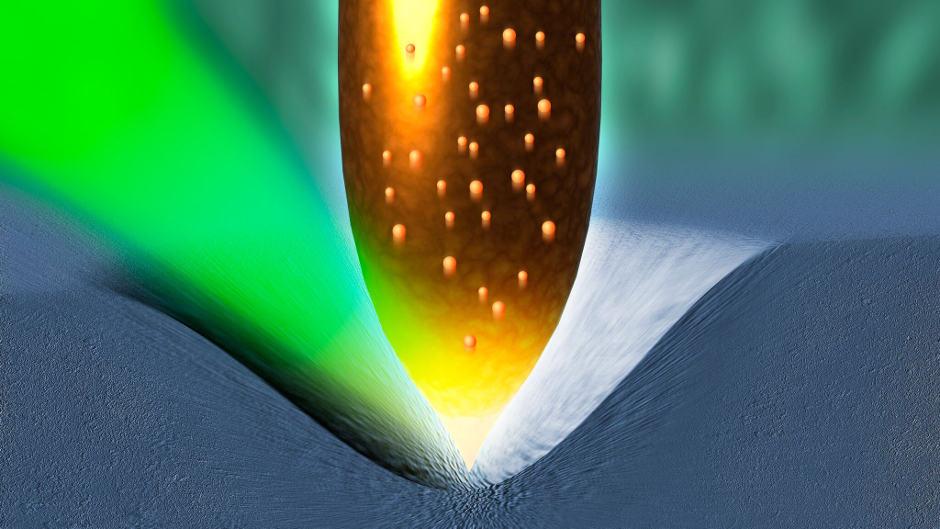
In a paper published in the journal Science, researchers at the Warwick University have demonstrated that more energy could be generated by photovoltaic solar cells by deforming the crystals within the semiconductors, simply by pressing on them.
Silicon solar cells typically consist of two layers, p- and n-type semiconductors, which are placed together to form a p-n junction.
When light is absorbed by the cell, this p-n junction generates an internal field within the device, which splits the charge carriers in opposite directions, generating a current and voltage across the junction.
While such junctions play a crucial role in extracting power from solar cells, they have a fundamental efficiency limit, known as the Shockley-Queisser Limit. This means that only 33.7 per cent of the power contained in sunlight falling on an ideal solar cell in ideal conditions can be converted into electricity.
To find out if this limit could be overcome, the researchers turned to a less well known effect known as the bulk photovoltaic effect. This effect is only found in certain semiconducting materials which have a lack of symmetry around their central point, known as a non-centrosymmetric structure, according to Prof Marin Alexe, who led the research.
“This is a type of symmetry which allows for the spontaneous splitting of those light-induced carriers without any requirement for a p-n junction,” said Alexe.
However, these materials have very low power generation efficiencies of up to six per cent, compared to up to 26 per cent for p-n junction photovoltaic solar cells, he said.
So the researchers wondered if they could re-create this bulk photovoltaic effect in conventional semiconductors used in solar cells, by forcing them into a non-centrosymmetric structure.
“Our idea was to introduce an inhomogeneous strain into the material, which breaks the symmetry locally, meaning the bulk photovoltaic effect kicks in,” said Alexe.
To do this, they pushed the semiconductors into shape using conductive tips from atomic force microscopy devices.
They found that when they squeezed individual crystals of strontium titanate, titanium dioxide, and silicon in this way, all three were able to show the bulk photovoltaic effect.
This so-called flexo-photovoltaic effect may one day give commercial solar cells an additional efficiency boost, he said.





Poll: Should the UK’s railways be renationalised?
I think that a network inclusive of the vehicles on it would make sense. However it remains to be seen if there is any plan for it to be for the...